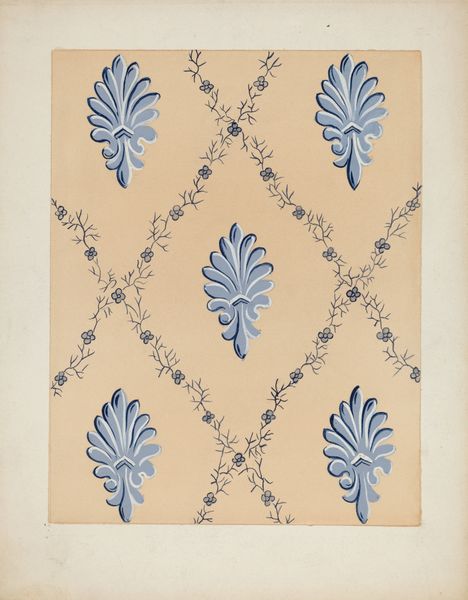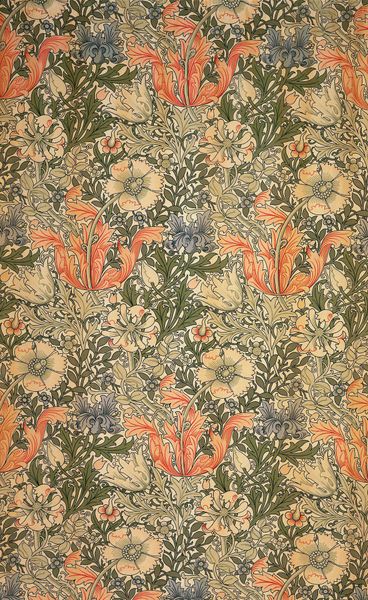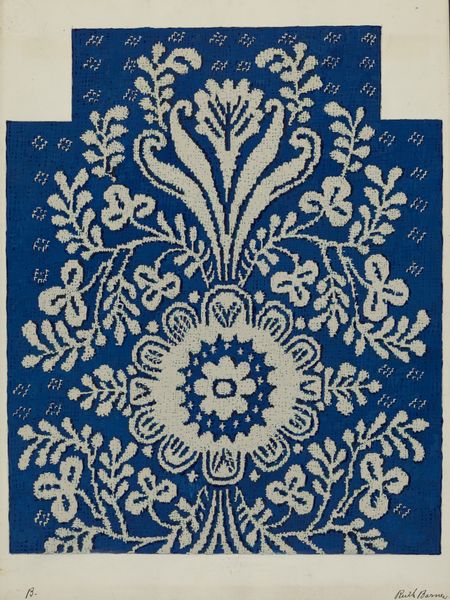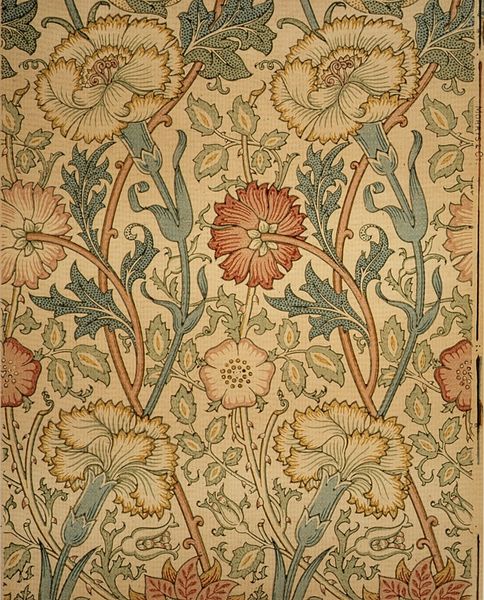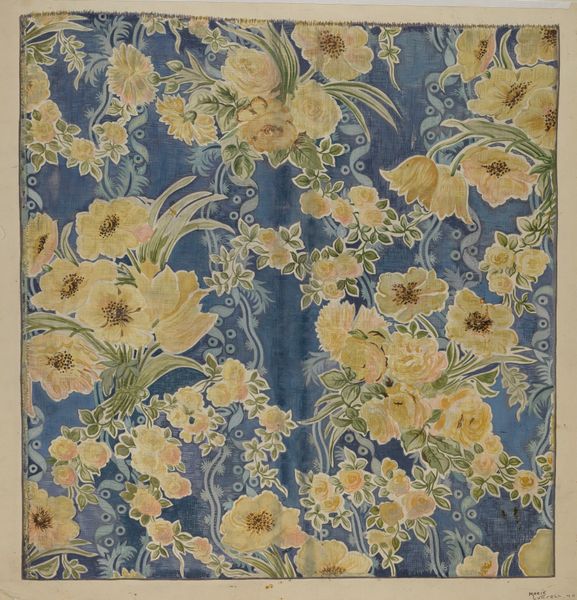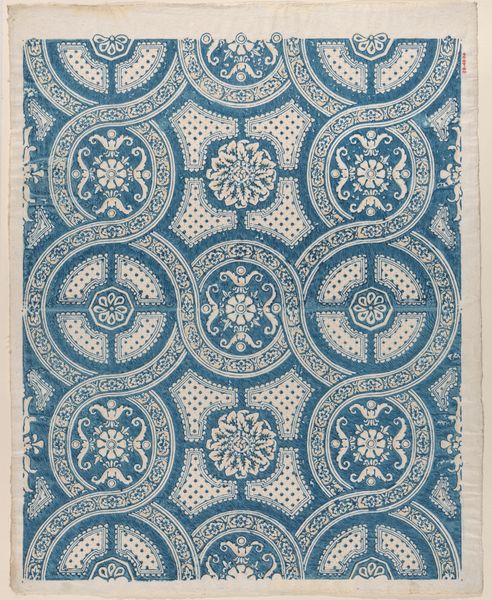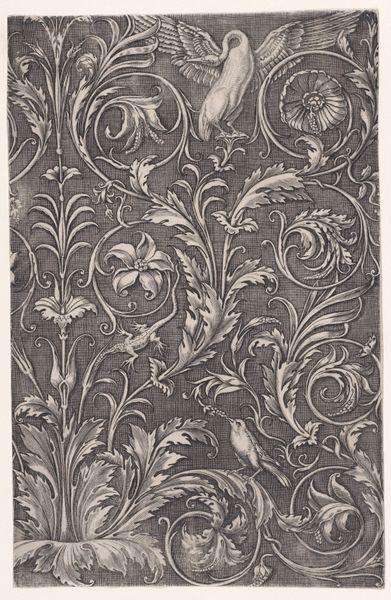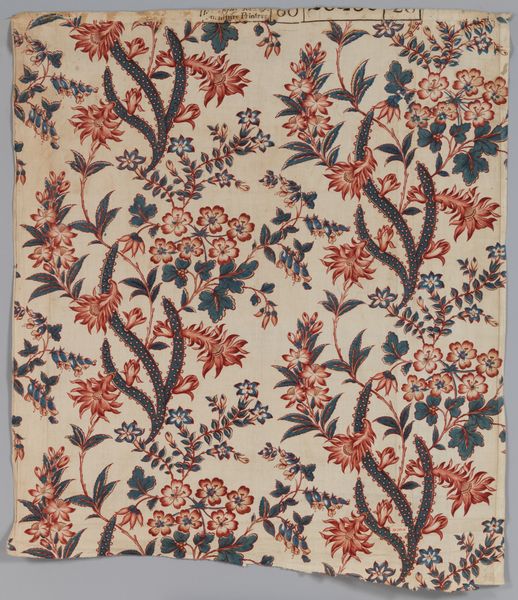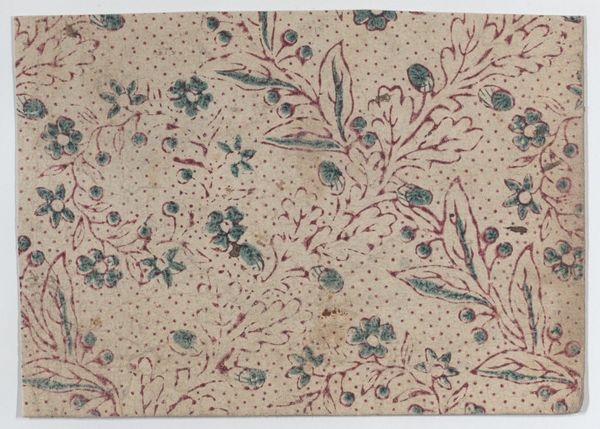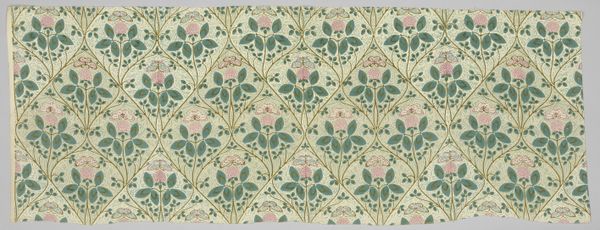
Dimensions: Sheet: 27 x 21 1/2 in. (68.6 x 54.6 cm)
Copyright: Public Domain
Curator: Looking at William Morris's "Marigold" from 1875, currently residing here at the Metropolitan Museum, what's your initial feeling? It’s a drawing, but meant to become a textile print. Editor: The colour palette, that crisp blue against the white, is what grabs me first. It’s simultaneously calming and quite striking. It’s a very controlled energy, wouldn't you agree? Almost a cool, classical restraint in its repetition. Curator: Restraint is an interesting word. Given Morris’s staunch anti-industrial sentiments and commitment to handcrafted beauty, this repetition wasn't merely decorative. Each carefully rendered flower echoes a desire for accessible beauty, resisting the cheap, mass-produced designs of the era. Editor: Yes, but accessibility meant appealing to a burgeoning middle class, eager to embrace art and design that signaled a certain social standing. Wasn’t the Arts and Crafts movement also a reflection of anxieties surrounding industrialisation and the perceived loss of traditional skills? Curator: Absolutely, there is always that dichotomy, the intent against reception and placement in social trends. These organic forms—marigolds and scrolling foliage—become more than pretty motifs; they serve as potent symbols of nature's inherent order and, perhaps, a yearning for simpler, pre-industrial times. Each flower seems intentionally placed, conveying more than surface decoration. There's a sense of intentionality behind the motif. Editor: It’s certainly true, and it is precisely this density, the profusion of floral forms, that creates a very specific kind of consumer experience. I would wonder who was commissioning such textiles and in what contexts they were shown. It speaks to the commodification of nature as a respite from urban industrialization. Curator: Considering his influence on the later Art Nouveau movement, these textiles moved past mere utility. They suggested a synthesis of nature, art, and daily life. The goal was, as you indicate, a social reimagining via design. Editor: So we find ourselves in a very interesting tension; this tension being how utopian and revolutionary artistic ideologies enter practical consumerism to inform socio-economic landscapes. Curator: Exactly. Morris sought beauty for all, challenging prevailing social norms through design. Editor: Indeed. I now view "Marigold" as something richer. The pattern certainly echoes our contemporary material realities today.
Comments
No comments
Be the first to comment and join the conversation on the ultimate creative platform.


